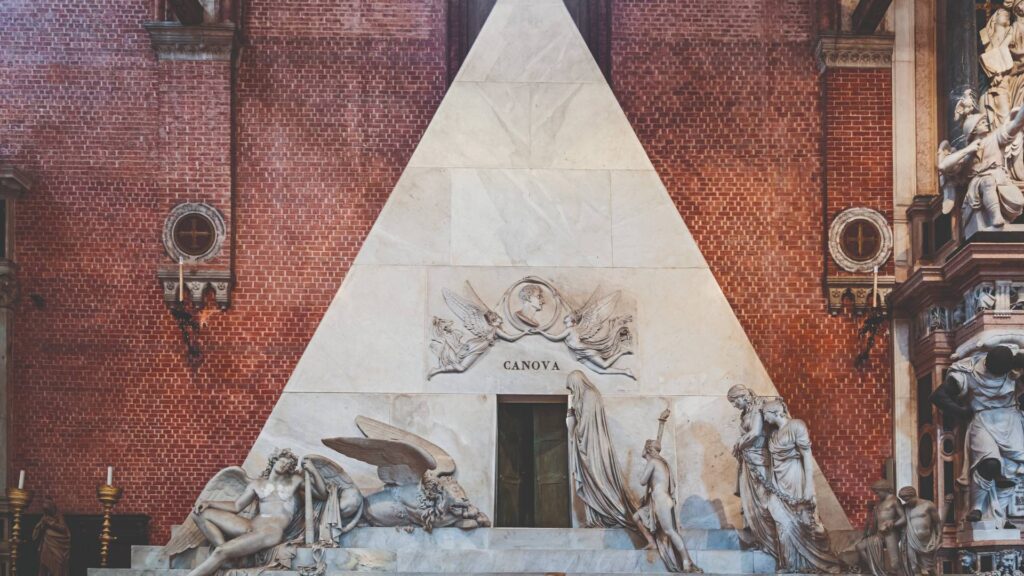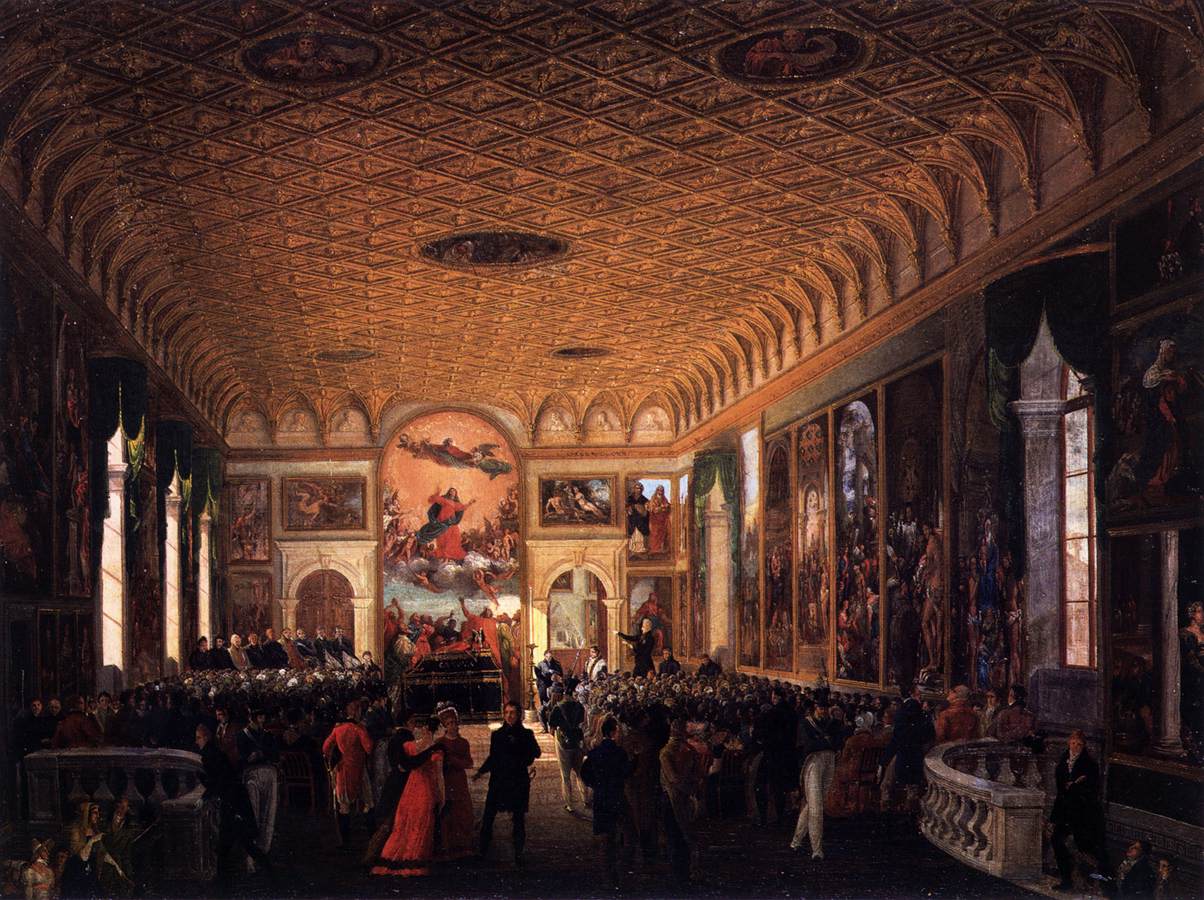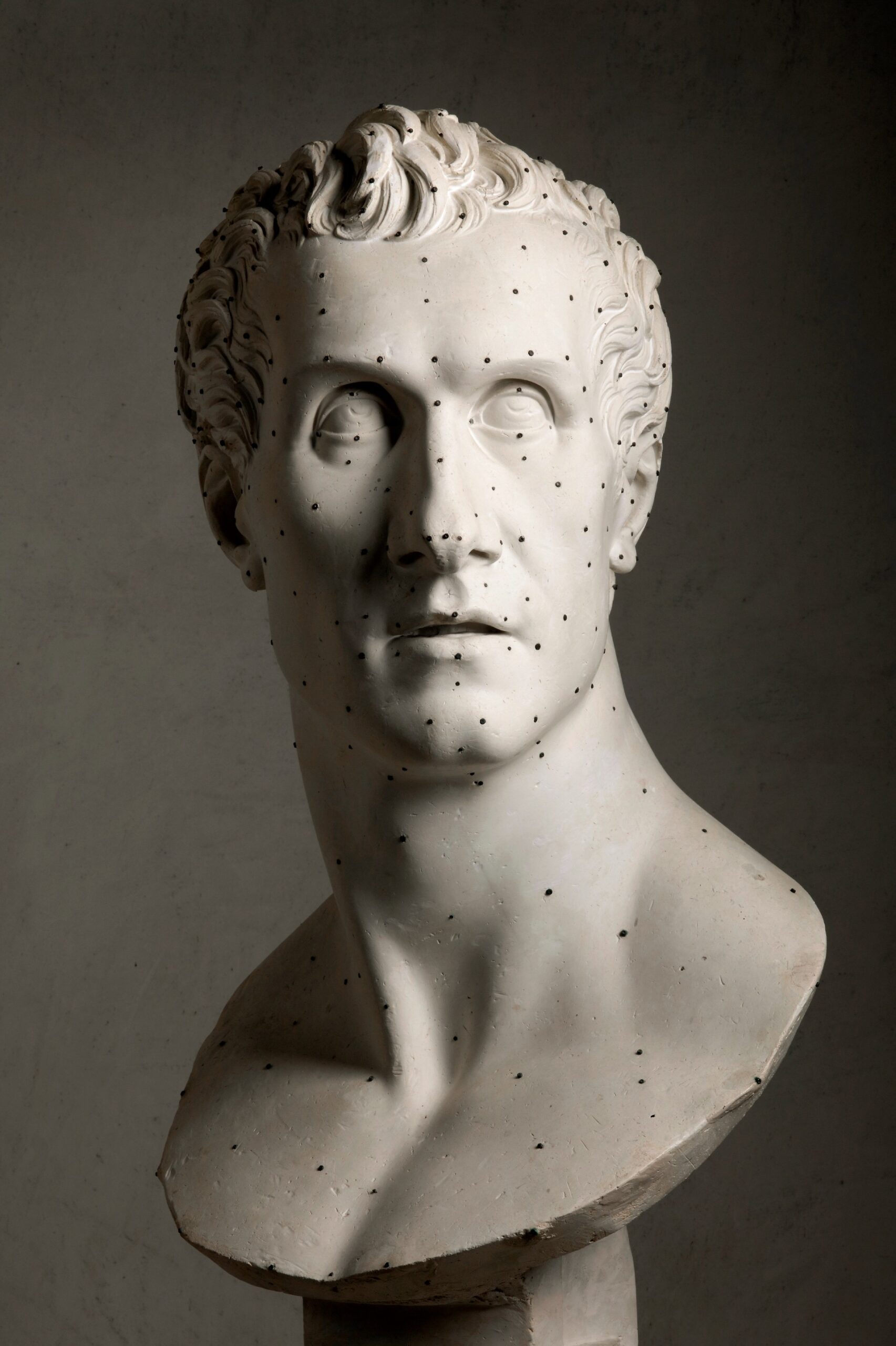
81. Venice Film Festival

80. Venice Film Festival

79. Venice Film Festival

The Biennale Arte Guide
Foreigners Everywhere

The Biennale Architecture Guide
The Laboratory of the Future

The Biennale Arte Guide
Il latte dei sogni

Titian, Canova, the Frari Basilica, and Leopoldo Cicognara drawn together in art and destiny. Canova’s commemoration was celebrated before Titian’s Assumption in 1827, though the artwork was not kept in the Basilica, as it is today, but at the Venice Academy of Fine Arts, then presided by Leopoldo Cicognara. It had been Canova’s idea to build a mausoleum on Titian’s tomb.
The same tomb model, which is still at the Academy, was then reprised by Canova’s pupils (Antonio Bosa, Giuseppe Gabris, Bartolomeo Ferrari, Jacopo De’ Martini, Rinaldo Rinaldi, Luigi Zandomeneghi) for their mentor’s cenotaph, built in 1822-27, which now stands on the left nave at the Frari Basilica, opposite Zandomeneghi’s Monument to Titian of 1843-53.
Our story is all about the Assumption, Canova’s cenotaph, and the Monument to Titian, spans over centuries, and ties together the lives of the two art masters.

At the second floor at Palazzo Francesconi, near St Mark’s, in the morning of October 13, 1822, Antonio Canova died at 66. He had recently visited Rome and his hometown of Possango, some forty miles north of Venice, before travelling to Venice on October 4 to seek treatment by physician Francesco Aglietti. Canova was a guest of his friend Floriano Francesconi, the founder of Caffè Florian in St Mark’s Square. Canova suffered from stomach ailments, a sort of occupational disease exacerbated by the physical exertion of sculpting using the tools available at the time. His death was commemorated with two funerals, one in Venice and one in Rome, and with a non-denominational event hosted by Leopoldo Cicognara at the Fine Arts Academy, which is where Titian’s Assumption was kept at the time. Canova’s remains were moved back to Possagno, his hometown, and later to the newly built Temple, which the maestro had designed. Canova’s heart – the seat fo the sould and spirit of the divine sculptor – was excised during the autopsy and kept in porphyry urn that reads COR MAGNI CANOVAE (‘the heart of the great Canova’). Initially kept at the Academy, together with the artist’s right hand, the heart was moved to the cenotaph at the Frari Basilica five years later, when the monument was finished.

The inspiration for the mausoleum came from Canova himself, which he originally designed for Titian in 1794. The same concept can be appreciated in the Monument to Maria Christina of Austria at the Augustinian Church in Vienna (1798-1805). The door, set ajar, symbolizes the passing of the living into the beyond, accompanied by a sombre procession of the sister arts on the right. The veiled mourning woman is the allegory of sculpture, followed by grief-stricken painting and architecture. The three small spirits bearing an open flame symbolize the immortality of art. Canova’s genius is on the left, represented by a young, male, winged figure, sleeping, a flameless torch in his hand. Another symbol – a lion crouching by – is Venice’s participation in the mourning. A profound reflection on the significance of art and death
Built entirely in Carrara marble with the sole exception of the base, the piece comprises a pyramid roughly 29 feet large upon a three-stepped base, where the several sculptures lie. Only twenty years since its making, the monument showed signs of decay, especially where marble of lesser quality had been used. Metal supports were rusting and showing up beneath the slabs of marble, which had since settled into slightly different positions. Restorations carried out in the late 1900s didn’t do much to improve the situation. Since 2010, thanks to contributions by the Venice in Peril Fund, the monument has been studied accurately, and new restoration work began in June 2021. A year later, the restoration was completed.
Io Canova. Genio europeo is an essential stage of the celebration of Canova, 200 years after his death. From October 15 to February 26, the Musei Civici in Bassano del Grappa, in cooperation with Villaggio Globale International, will focus on Antonio Canova – the artist and the author of the resurgence of classical art in sculpture and the person who enchanted millions with the sole use of eternal, timeless beauty, as well as the man, the collector, the diplomat: one of the most significant personalities in the cultural and political world between the eighteenth and nineteenth centuries.
www.museibassano.it